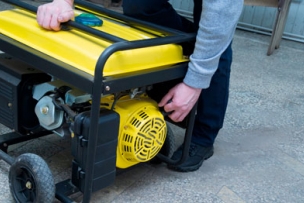Questions and Answers
1. What is Zika virus disease (ZVD)?
Zika virus is the cause of a relatively mild disease characterized by nonspecific symptoms such as mild fever, skin rashes, conjunctivitis, muscle and joint pain, malaise or headache that normally last for 2 to 7 days. The majority of infected individuals never show any signs or symptoms of infection. Although not conclusively proven, Zika infection also has been potentially linked with more serious conditions, including microcephaly in infants born to infected mothers and Guillain-Barré syndrome, a rare neurological disorder characterized by muscle weakness and, sometimes, paralysis. There are ongoing investigations and research to determine whether causal links actually exist.
2. How is Zika transmitted?
The virus is spread through bites from infected Aedes mosquitoes, the same mosquitoes that spread dengue, chikungunya and yellow fever. Mosquitoes
can become infected when they bite a person infected with the virus.
The virus is detectable in blood, urine, saliva and seminal fluid, depending on the phase of the infection. A limited number of cases of transmission have been reported associated with childbirth, blood transfusion and sexual contact.
3. How can I protect myself from becoming infected by the Zika virus?
According to both the WHO and CDC, the best way to prevent diseases spread by mosquitoes is to protect yourself against mosquito bites. Avoiding areas known to have an ongoing infection outbreak will eliminate the risk of contracting Zika or the other mosquito-borne diseases. If this is not possible, you can reduce the risk of being bitten by limiting the amount of time spent outdoors, wearing long-sleeved shirts and long pants, and using EPA-registered insect repellents.
4. Can DuPont recommend PPE to use for the application of pesticides?
The selection of appropriate PPE (including respiratory, eye, head, foot and hand protection) is the responsibility of the end-user and must be made following a thorough hazard assessment of the work tasks and the environment. It also must be checked that the selected PPE meets relevant government and industry standards and that individuals are properly trained in the donning, doffing, use and disposal of PPE to avoid contamination.
The use and application of pesticides is regulated by the EPA. There are a large number of registered pesticide products based on chemical or biological active ingredients in combination with inert ingredients that can come in a variety of forms; most typically, dry powders or granules, solutions, suspensions or emulsions. Water is typically used for liquid formulations, but other liquids such as mineral oil, kerosene, diesel fuel and xylene are sometimes used as carriers.
The PPE that is required to protect individuals applying pesticides will be stated in the label instructions for the product. Requirements also may be found in the SDS for the pesticide.
Often there is the requirement for chemical-resistant clothing or other PPE. A material’s chemical resistance depends on chemicals involved (active and inert ingredients), their physical state (liquid or dry), the exposure time, the method of application and the exposure conditions. Consequently, a hazard assessment is needed so that the end-user can select the proper PPE to ensure that individuals are protected when handling pesticides.
The information provided by DuPont is not intended as a substitute for any hazard assessment testing that the end-user needs to conduct to determine the suitability of our products for their particular purposes. This information is offered for consideration and is not a recommendation.







Talk to Us!
Leave a reply
Your email address will not be published. Required fields are marked *